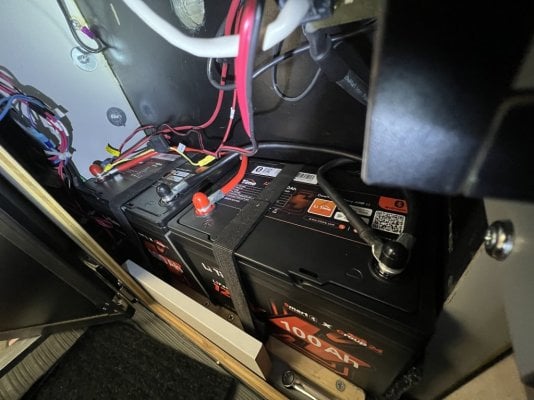I have the same parallel setup in my van and I see the same thing happen. Notably when the app reports one of the pair in "standby" 99% (batteryA) and the other in "standby/Full" 100% (batteryB ).
When I start up my fridge, often A discharges and B stays in "standby/Full". B supplies 0 Amps. Before I learned to catch this problem I saw A deplete to 18%, while B remained at 100%, before I decided to plug in.
I am alert to this now. My solution is to use the app's "discharge switch" for battery A, to turn A off. Then B starts to discharge. I just turn A back on, and they both discharge normally. They maintain any SOC offset, more or less, as they discharge. Each battery then supplies about half the amps demanded, as expected.
Li Time avidly tried to help me with this, even to ask how many amps my fridge demands, but I could not understand their explanation or answer. I do NOT believe both batteries are discharging when this happens. I think the reporting is accurate. The BT monitors are independent. I think the BMS programming is flawed in "standby/Full" mode, and possibly there is some other corner case where this behavior is beneficial.
When my fridge runs it takes about 5A. The B hold-out battery is always the same one of the pair. The problem doesn't seem to occur when I start up the fridge when the batteries are not fully charged. Li Time made noises about the fridge being too small a load for me, too. I did try a bigger load than the just fridge (7.4A), and this still happened.
I am thankful I can monitor these batteries. I can see what is going on, and I now know I can catch this early. Without the bluetooth I would never have insight into what the batteries are doing. I'm quite happy with this upgrade from AGM. Figuring this out was confusing, but wiring up monitors would have been impossible for me.
I hope my solution can help you.



